Something to say
(Above photo by Gerard Gaskin)
Estonian multimedia artist Marko Mäetamm tells stories, both personal and global, in I Want to Tell You Something, an exhibition on display at the Picker Art Gallery through January 8.
The exhibition features paintings, drawings, sculptures, ceramics, and video installations through which Mäetamm shares with viewers his life, his problems, and his perspective on the world around him.
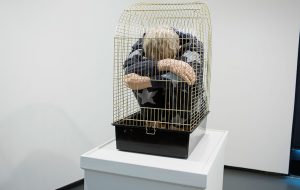
“If I don’t have anything to say, then I don’t see why I should paint, or do anything.” — Marko Mäetamm (Photo by Gerard Gaskin)
“For me, making art is always about saying something, or at least provoking communication or dialogue,” said Mäetamm, who is Colgate’s 2016 Christian A. Johnson Artist in Residence. “If I don’t have anything to say, then I don’t see why I should paint, or do anything.”
Many of the works are intended to provoke conversation about everyday life and cultural issues. The installation titled Bookshelf (pictured above) looks like a small room covered with books on the outside, and inside is the video Just Checking if There’s Something New, showing a man continuously checking his smartphone.
“I don’t know if it’s good or bad,” said Mäetamm, reflecting on social media and texting as new forms of communication, “but it’s different now, and it’s exciting, and that is what interests me: observing it.”
Mäetamm is also teaching an advanced studio art course, presenting a lecture, and completing a project with the theater department during his four-month residency.
Behind the scenes, summer intern Katie Jean Colman ’18 assisted gallery staff with the exhibition. She wrote an essay for the catalogue, organized a student event, and started a project with Estonian fashion designer Reet Aus to make sustainably sourced T-shirts complementing the exhibition.
“I did all sorts of work during my internship, from curation to collections management,” says Colman, an art history major. “Each day held something new.”
Internships at the Picker Art Gallery, like Colman’s, satisfy the internship requirement of the museum studies minor, a new interdisciplinary program that focuses on cultural property, public history, and museum theory.
If these objects could talk…
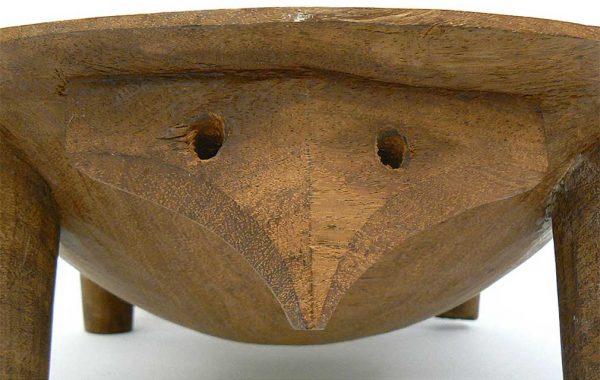
Photo by LMA
This kava bowl from the Republic of Fiji (above) and a prayer scroll from Ethiopia (below) are two of the pieces that are part of In Dialogue: How Objects Communicate. The exhibition examines objects from different historical and cultural contexts — originating from Australia to Ethiopia, Panama to the United States — to explore their role in human communication. To deepen our appreciation of everyday things around us, the show examines objects as markers of identity and as storytellers, as well as their roles in design and performance. It runs through December 22 at the Longyear Museum of Anthropology.
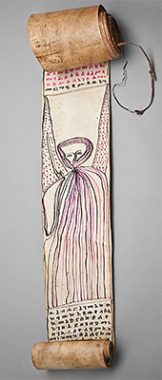
Photo by Warren Wheeler
More than just movies
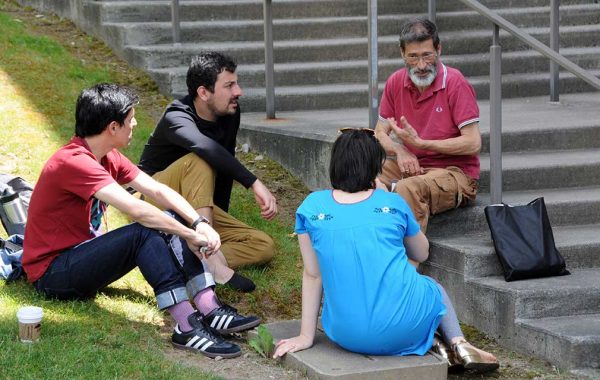
They came. They saw. They confabbed — on culture and identity politics, the ethical responsibilities of a documentarian, and the proper balance of race and ethnicity in a program lineup. Then the 170 attendees of this year’s Flaherty Film Seminar, held at Colgate June 18–24, disbanded.
For the university — the seminar’s home base during the past nine summers — that’s just the trailer. The full story plays out during the academic year, because six to eight Colgate professors attend the seminar each summer, meeting filmmakers and broadening their understanding of the international documentary film landscape.
“We’re using those contacts to integrate film into our courses,” said Mary Simonson, assistant professor of film and media studies and women’s studies.
Simonson uses the Flaherty submission Lovely Andrea, by Hito Steyerl, to engage students in conversation about intellectual property and ethics. Flaherty films end up exactly where you would expect: in courses like Introduction to Film and Media Studies as well as The Documentary Impulse, taught by Ani Maitra, assistant professor of global film and media.
“I’ve used astounding shorts and features that my students and I would not have seen otherwise,” Maitra said.
“Flaherty extends the boundaries of our documentary knowledge,” Simonson added. “For example, watching the curators’ approaches has changed how I think about gender and race representation when programming Colgate’s Alternative Cinema and Friday Night Film Series.”
The university also provides scholarships for up to three high-achieving film and media studies students interested in the seminar. Matt LaPaglia ’17, a history major from Cicero, N.Y., was around the Flaherty table in 2015. “I came to understand that by pursuing filmmaking, I would not only be entering into a profession or an industry,” he said, “but also a community of brilliant people.”
The university maintains the 8mm, 16mm, and 35mm projection equipment that the seminar needs for its screenings. And the Chenango Valley is a perfect setting for inspiration, reflection, and conversation.
“Part of the allure of the seminar is that you’re taken out of your normal context, and you can focus on the movies and people around you,” said Professor Penny Lane, who attended the seminar even before she joined the Colgate faculty.
Flaherty programmers are back on campus this fall, accompanied by filmmaker and 2016 fellow Sandra Kogut, thanks to the Colgate/Flaherty Distinguished Global Filmmaker Residency program. Together, they are engaging with students in classroom conversations, film screenings, project critiques, dinnertime discussions, and more.
On the road
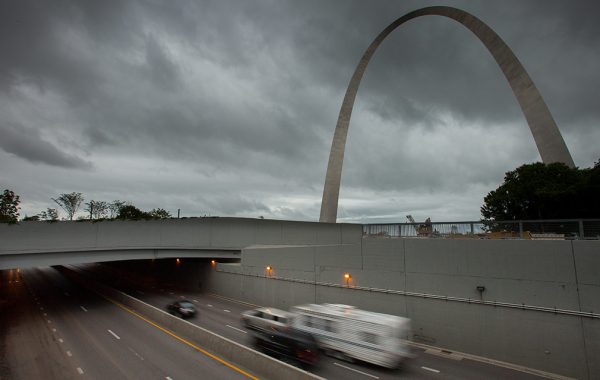
The Interstate Highway System and photographer Michael DeFilippo ’78 both turned 60 this year. To celebrate, DeFilippo created a 60-photograph series called The Interstate at 60, St. Louis at 252 to document the impact that the highway system has had on his home city of St. Louis, Mo.
The photographs — showing semitrucks speeding past 200-year-old churches and bustling stretches of highway cutting through abandoned neighborhoods — illustrate the contrast between the old city and a modern form of transportation.
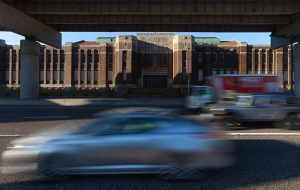 The population of St. Louis has dropped by 50 percent since 1970, and many other old American cities have seen a similar trend. “Hundreds of thousands of city residents in Saint Louis alone followed the easy path out of town created by the modern highways,” DeFilippo wrote in his mission statement for the project.
The population of St. Louis has dropped by 50 percent since 1970, and many other old American cities have seen a similar trend. “Hundreds of thousands of city residents in Saint Louis alone followed the easy path out of town created by the modern highways,” DeFilippo wrote in his mission statement for the project.
Many cities have recognized that interstate highways harm city life and have started projects to either tear them down or build walkways across them to encourage walking and biking.
DeFilippo himself mostly travels by bike, so he’s been up close and personal with the highways. For this project, “I spent some time on the shoulders of busy roads, under highway overpasses, walking up and down access ramps at interchanges,” he told the Huffington Post.
The last photo in DeFilippo’s 60-part series depicts an overpass park that was built over I-44 to allow pedestrians to walk from the Gateway Arch to downtown St. Louis.
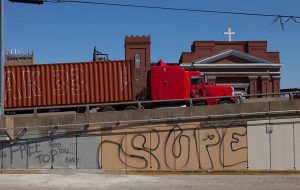 The image captures DeFilippo’s hope for the city’s future. He told the Huffington Post that the park is “a start toward undoing some of the damage done to St. Louis by this highway system.”
The image captures DeFilippo’s hope for the city’s future. He told the Huffington Post that the park is “a start toward undoing some of the damage done to St. Louis by this highway system.”
— Emily Daniel ’18






